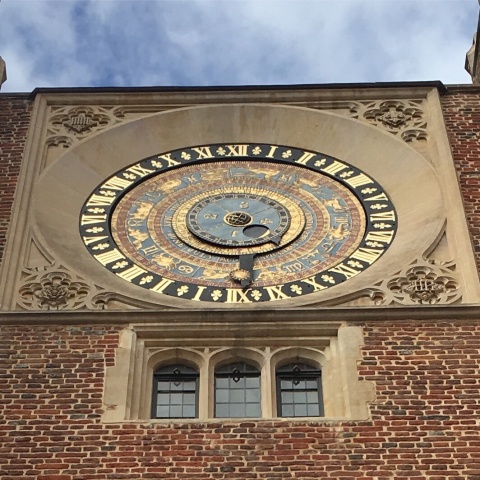The Lost Dress of Elizabeth I – A rare surviving piece of the dress once worn by Elizabeth I to go on display at Hampton Court Palace alongside the world-famous ‘Rainbow Portrait’
Following a three-year conservation project by Historic Royal Palaces, the spectacular Bacton Altar Cloth will go on display at Elizabeth I’s former home this autumn, united for the first time with the iconic portrait in which it may once have featured
An elegantly embroidered altar cloth which may once have been part of a dress worn by Queen Elizabeth I will go on display for the first time at Hampton Court Palace this October in an exhibition entitled The Lost Dress of Elizabeth I. The ‘Bacton Altar Cloth’, discovered in a church in rural Herefordshire, is now considered to be one of the rarest survivals of Elizabethan dress in existence. After undergoing extensive conservation work at Hampton Court Palace for the past two years, it will be exhibited alongside a portrait of the ‘Virgin Queen’ featuring a dress of strikingly similar design.
The richly embroidered textile – named after the church in Bacton, Herefordshire where it was preserved for centuries – was identified by Historic Royal Palaces curator Eleri Lynn as being part of a high-status sixteenth-century court dress back in 2016. The altar cloth has long been associated with Blanche Parry, one of Queen Elizabeth I’s most faithful servants who eventually became her Chief Gentlewoman of the Bedchamber, and who was born in Bacton. Records show that Elizabeth regularly gifted her discarded clothing to Parry as one of her closest confidantes, and for years there was speculation that the altar cloth may have a connection to the Queen. On examining the textile, Lynn – an expert in Tudor court dress – was able to identify previously unseen features, studying the seams of the fabric to confirm it had once formed part of a skirt.
Following the exciting discovery, Historic Royal Palaces – the independent charity that cares for Hampton Court Palace – agreed to commence a conservation programme to stabilise the fragile fabric in the palace’s world-class textile studio. Further examination of the cloth by experts has added weight to Lynn’s theory that it might once have belonged to the Tudor Queen. Its creation from high-status silver chamblet silk, use of professional embroidery including real gold and silver thread, and distinct evidence of pattern-cutting all suggest that the item could have formed part of Elizabeth’s lavish wardrobe. The conservation team was also able to test the dyes within the fabric, discovering that it contained expensive Indigo and red dye sourced from Mexico – the kind of materials only available to a person with very high status.
Displayed alongside the altar cloth will be the iconic Rainbow Portrait (c. 1600 – 02), on loan from Hatfield House, which depicts Elizabeth I wearing a gown that bears a tantalising resemblance. On display for the first time ever at Hampton Court Palace, the portrait – attributed to Marcus Gheeraerts the Younger – was commissioned by Robert Cecil and is filled with symbolism including motifs of eyes and ears. Accompanying the painting will be a selection of rare domestic print books dating from the Tudor period, which would have provided inspiration for many of the embroidered motifs fashionable during Elizabeth’s reign – including those found on the Bacton Altar Cloth – brought together for the first time with other stunning embroidery work from the period. Unpacking the Virgin Queen’s now iconic style, the exhibition will explore the artistry and majesty of the Tudor wardrobe, Elizabeth’s inner circle of women, how embroidery served as a way of female bonding at court, along with the fascinating world of secret symbols and Elizabethan codes.
Eleri Lynn, Collections Curator at Historic Royal Palaces, said “After three years of painstaking conservation and research, we’re thrilled to finally be putting this exquisite object on display at Hampton Court Palace, Elizabeth’s former home. To have an item of Tudor dress with such a close link to Queen Elizabeth I is extraordinarily rare, and we are very excited to display the Bacton Altar Cloth next to the legendary Rainbow Portrait, with its prominent similarities to the fabric of the cloth itself.”
For more information visit here
Poppy Watt


